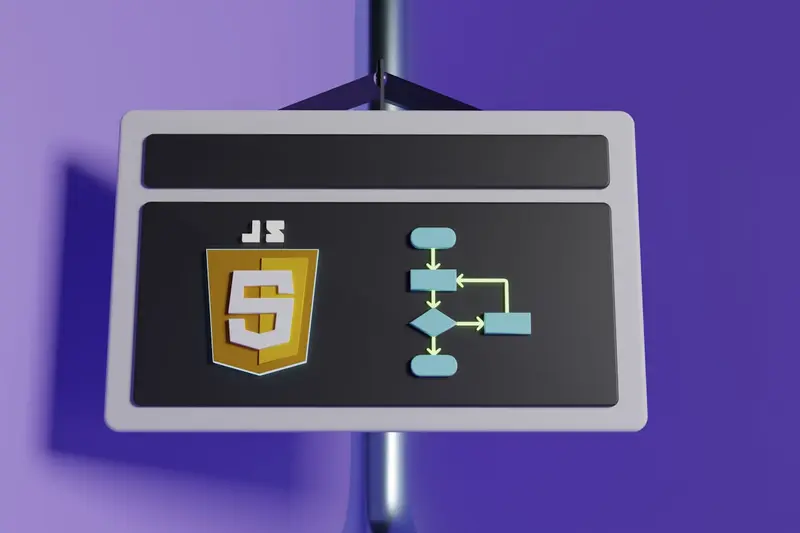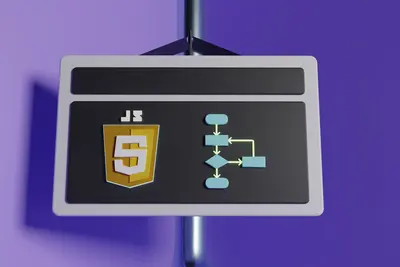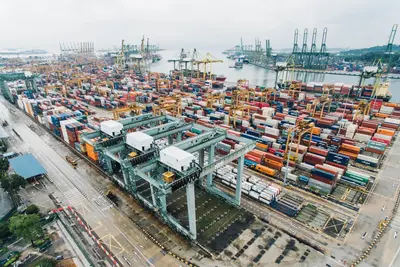☸️ Kubernetes Installation Complete Guide on AlmaLinux
Ready to orchestrate containers like a maestro? 🎭 Kubernetes (K8s) is the industry standard for container orchestration, powering the world’s largest applications! In this comprehensive guide, we’ll install Kubernetes on AlmaLinux and deploy your first applications. Let’s master the cloud-native revolution! 🚀
🤔 Why is Kubernetes Important?
Kubernetes is the operating system of the cloud! ☁️ Here’s why it dominates:
- 🚀 Industry Standard: 92% of companies use Kubernetes
- 💼 High-Paying Jobs: K8s engineers earn $140k+ annually
- 📈 Infinite Scalability: Scale from 1 to 10,000+ containers
- 🔄 Self-Healing: Automatically replaces failed containers
- 🌍 Cloud Agnostic: Works on AWS, Azure, GCP, on-premise
- 🎯 Zero Downtime: Rolling updates without service interruption
- 💰 Cost Optimization: Efficient resource utilization
- 🔧 DevOps Essential: Core skill for modern infrastructure
Kubernetes literally runs Netflix, Spotify, Uber, and more! 🌟
🎯 What You Need
Let’s prepare for Kubernetes mastery! ✅
- ✅ AlmaLinux 8 or 9 (minimum 2 nodes for cluster)
- ✅ At least 4GB RAM per node (8GB recommended)
- ✅ 2 CPUs per node minimum
- ✅ 20GB free disk space
- ✅ Root or sudo access
- ✅ Network connectivity between nodes
- ✅ Docker or containerd installed
- ✅ 30 minutes for setup
- ✅ Excitement for cloud-native tech! 🎉
Let’s build your Kubernetes cluster! 🌟
📝 Step 1: Prepare System for Kubernetes
First, let’s configure AlmaLinux for K8s! 🎯
# Disable swap (Kubernetes requirement)
sudo swapoff -a
sudo sed -i '/ swap / s/^\(.*\)$/#\1/g' /etc/fstab
# Disable SELinux (or set to permissive)
sudo setenforce 0
sudo sed -i 's/^SELINUX=enforcing$/SELINUX=permissive/' /etc/selinux/config
# Configure kernel modules
cat <<EOF | sudo tee /etc/modules-load.d/k8s.conf
overlay
br_netfilter
EOF
sudo modprobe overlay
sudo modprobe br_netfilter
# Configure sysctl for Kubernetes
cat <<EOF | sudo tee /etc/sysctl.d/k8s.conf
net.bridge.bridge-nf-call-iptables = 1
net.bridge.bridge-nf-call-ip6tables = 1
net.ipv4.ip_forward = 1
EOF
sudo sysctl --system
# Update system packages
sudo dnf update -yPerfect! 🎉 System is ready for Kubernetes!
🔧 Step 2: Install Container Runtime (containerd)
Kubernetes needs a container runtime. Let’s install containerd! 🐳
# Install containerd
sudo dnf install -y containerd.io
# Configure containerd
sudo mkdir -p /etc/containerd
sudo containerd config default | sudo tee /etc/containerd/config.toml
# Enable SystemdCgroup
sudo sed -i 's/SystemdCgroup = false/SystemdCgroup = true/g' /etc/containerd/config.toml
# Start and enable containerd
sudo systemctl restart containerd
sudo systemctl enable containerd
# Verify containerd is running
sudo systemctl status containerdExcellent! 🚀 Container runtime is ready!
🌟 Step 3: Install Kubernetes Components
Time to install kubeadm, kubelet, and kubectl! ⚙️
# Add Kubernetes repository
cat <<EOF | sudo tee /etc/yum.repos.d/kubernetes.repo
[kubernetes]
name=Kubernetes
baseurl=https://packages.cloud.google.com/yum/repos/kubernetes-el7-\$basearch
enabled=1
gpgcheck=1
gpgkey=https://packages.cloud.google.com/yum/doc/rpm-package-key.gpg
exclude=kubelet kubeadm kubectl
EOF
# Install Kubernetes components
sudo dnf install -y kubelet kubeadm kubectl --disableexcludes=kubernetes
# Enable kubelet service
sudo systemctl enable --now kubelet
# Check versions
kubectl version --client
kubeadm versionAmazing! 🎯 Kubernetes tools are installed!
✅ Step 4: Initialize Kubernetes Master Node
Let’s create your Kubernetes cluster! 🏗️
# Initialize master node (run on master only)
sudo kubeadm init --pod-network-cidr=10.244.0.0/16
# Configure kubectl for your user
mkdir -p $HOME/.kube
sudo cp -i /etc/kubernetes/admin.conf $HOME/.kube/config
sudo chown $(id -u):$(id -g) $HOME/.kube/config
# Verify cluster status
kubectl cluster-info
kubectl get nodesSave the join command output! You’ll need it for worker nodes:
kubeadm join <master-ip>:6443 --token <token> --discovery-token-ca-cert-hash sha256:<hash>Fantastic! 🎉 Master node is ready!
🔧 Step 5: Install Pod Network Add-on
Kubernetes needs a network plugin for pod communication! 🌐
# Install Flannel network plugin
kubectl apply -f https://raw.githubusercontent.com/flannel-io/flannel/master/Documentation/kube-flannel.yml
# Or install Calico (alternative)
kubectl create -f https://raw.githubusercontent.com/projectcalico/calico/v3.26.0/manifests/tigera-operator.yaml
kubectl create -f https://raw.githubusercontent.com/projectcalico/calico/v3.26.0/manifests/custom-resources.yaml
# Verify network pods are running
kubectl get pods -n kube-systemPerfect! ⚡ Network is configured!
🌟 Step 6: Join Worker Nodes (Multi-Node Setup)
On each worker node, join the cluster! 👥
# On worker nodes, run the join command from master init
sudo kubeadm join <master-ip>:6443 --token <token> \
--discovery-token-ca-cert-hash sha256:<hash>
# On master, verify nodes joined
kubectl get nodes
# Label worker nodes
kubectl label node <worker-node-name> node-role.kubernetes.io/worker=worker✅ Step 7: Deploy Your First Application
Let’s deploy a real application on Kubernetes! 🚀
Deploy Nginx Application
# Create deployment
kubectl create deployment nginx-app --image=nginx:latest --replicas=3
# Expose deployment as service
kubectl expose deployment nginx-app --port=80 --type=NodePort
# Check deployment status
kubectl get deployments
kubectl get pods
kubectl get services
# Scale the deployment
kubectl scale deployment nginx-app --replicas=5
# Get service URL
kubectl get svc nginx-appDeploy WordPress with MySQL
# Create namespace
kubectl create namespace wordpress
# Deploy MySQL
cat <<EOF | kubectl apply -f -
apiVersion: v1
kind: Secret
metadata:
name: mysql-pass
namespace: wordpress
type: Opaque
data:
password: V29yZFByZXNzUGFzcw== # Base64 encoded password
---
apiVersion: apps/v1
kind: Deployment
metadata:
name: wordpress-mysql
namespace: wordpress
spec:
selector:
matchLabels:
app: wordpress
tier: mysql
template:
metadata:
labels:
app: wordpress
tier: mysql
spec:
containers:
- image: mysql:8.0
name: mysql
env:
- name: MYSQL_ROOT_PASSWORD
valueFrom:
secretKeyRef:
name: mysql-pass
key: password
- name: MYSQL_DATABASE
value: wordpress
ports:
- containerPort: 3306
name: mysql
---
apiVersion: v1
kind: Service
metadata:
name: wordpress-mysql
namespace: wordpress
spec:
ports:
- port: 3306
selector:
app: wordpress
tier: mysql
EOF
# Deploy WordPress
cat <<EOF | kubectl apply -f -
apiVersion: apps/v1
kind: Deployment
metadata:
name: wordpress
namespace: wordpress
spec:
replicas: 2
selector:
matchLabels:
app: wordpress
tier: frontend
template:
metadata:
labels:
app: wordpress
tier: frontend
spec:
containers:
- image: wordpress:latest
name: wordpress
env:
- name: WORDPRESS_DB_HOST
value: wordpress-mysql
- name: WORDPRESS_DB_PASSWORD
valueFrom:
secretKeyRef:
name: mysql-pass
key: password
ports:
- containerPort: 80
name: wordpress
---
apiVersion: v1
kind: Service
metadata:
name: wordpress
namespace: wordpress
spec:
type: LoadBalancer
ports:
- port: 80
selector:
app: wordpress
tier: frontend
EOF
# Check WordPress deployment
kubectl get all -n wordpress🔧 Step 8: Install Kubernetes Dashboard
Get a visual interface for your cluster! 📊
# Deploy Dashboard
kubectl apply -f https://raw.githubusercontent.com/kubernetes/dashboard/v2.7.0/aio/deploy/recommended.yaml
# Create admin user for dashboard
cat <<EOF | kubectl apply -f -
apiVersion: v1
kind: ServiceAccount
metadata:
name: admin-user
namespace: kubernetes-dashboard
---
apiVersion: rbac.authorization.k8s.io/v1
kind: ClusterRoleBinding
metadata:
name: admin-user
roleRef:
apiGroup: rbac.authorization.k8s.io
kind: ClusterRole
name: cluster-admin
subjects:
- kind: ServiceAccount
name: admin-user
namespace: kubernetes-dashboard
EOF
# Get access token
kubectl -n kubernetes-dashboard create token admin-user
# Start proxy to access dashboard
kubectl proxy
# Access dashboard at:
# http://localhost:8001/api/v1/namespaces/kubernetes-dashboard/services/https:kubernetes-dashboard:/proxy/🌟 Step 9: Install Helm Package Manager
Helm is the package manager for Kubernetes! 📦
# Download and install Helm
curl -fsSL -o get_helm.sh https://raw.githubusercontent.com/helm/helm/main/scripts/get-helm-3
chmod 700 get_helm.sh
./get_helm.sh
# Add popular Helm repositories
helm repo add stable https://charts.helm.sh/stable
helm repo add bitnami https://charts.bitnami.com/bitnami
helm repo update
# Install an application using Helm
helm install my-redis bitnami/redis --namespace redis --create-namespace
# List Helm releases
helm list --all-namespaces🎮 Quick Examples
Practice Kubernetes with real deployments! 🎯
Example 1: Microservices Application
# microservices-app.yaml
apiVersion: apps/v1
kind: Deployment
metadata:
name: frontend
spec:
replicas: 3
selector:
matchLabels:
app: frontend
template:
metadata:
labels:
app: frontend
spec:
containers:
- name: frontend
image: nginx:alpine
ports:
- containerPort: 80
---
apiVersion: apps/v1
kind: Deployment
metadata:
name: backend-api
spec:
replicas: 2
selector:
matchLabels:
app: backend
template:
metadata:
labels:
app: backend
spec:
containers:
- name: api
image: node:16-alpine
command: ["node", "server.js"]
ports:
- containerPort: 3000Example 2: StatefulSet for Database
apiVersion: apps/v1
kind: StatefulSet
metadata:
name: postgres
spec:
serviceName: "postgres"
replicas: 1
selector:
matchLabels:
app: postgres
template:
metadata:
labels:
app: postgres
spec:
containers:
- name: postgres
image: postgres:14
env:
- name: POSTGRES_DB
value: myapp
- name: POSTGRES_PASSWORD
value: mysecretpassword
volumeMounts:
- name: postgres-storage
mountPath: /var/lib/postgresql/data
volumeClaimTemplates:
- metadata:
name: postgres-storage
spec:
accessModes: ["ReadWriteOnce"]
resources:
requests:
storage: 10GiExample 3: Ingress Controller
# Install NGINX Ingress Controller
kubectl apply -f https://raw.githubusercontent.com/kubernetes/ingress-nginx/controller-v1.8.2/deploy/static/provider/cloud/deploy.yaml
# Create Ingress resource
cat <<EOF | kubectl apply -f -
apiVersion: networking.k8s.io/v1
kind: Ingress
metadata:
name: my-ingress
annotations:
nginx.ingress.kubernetes.io/rewrite-target: /
spec:
rules:
- host: myapp.example.com
http:
paths:
- path: /
pathType: Prefix
backend:
service:
name: nginx-app
port:
number: 80
EOF🚨 Fix Common Problems
Kubernetes troubleshooting guide! 🔧
Problem 1: Nodes Not Ready
Solution:
# Check node status
kubectl describe node <node-name>
# Check kubelet logs
sudo journalctl -u kubelet -f
# Restart kubelet
sudo systemctl restart kubeletProblem 2: Pods Stuck in Pending
Solution:
# Check pod events
kubectl describe pod <pod-name>
# Check resource availability
kubectl top nodes
kubectl top pods
# Check for PVC issues
kubectl get pvcProblem 3: Network Issues
Solution:
# Check network plugin
kubectl get pods -n kube-system | grep -E "(flannel|calico|weave)"
# Restart network pods
kubectl delete pods -n kube-system -l app=flannel
# Check DNS
kubectl run -it --rm debug --image=busybox --restart=Never -- nslookup kubernetes📋 Simple Commands Summary
| Command | Purpose |
|---|---|
kubectl get nodes | List cluster nodes |
kubectl get pods | List pods |
kubectl get svc | List services |
kubectl apply -f file.yaml | Deploy from YAML |
kubectl delete -f file.yaml | Delete resources |
kubectl logs pod-name | View pod logs |
kubectl exec -it pod-name -- bash | Enter pod shell |
kubectl scale deployment app --replicas=5 | Scale deployment |
kubectl rollout status deployment/app | Check rollout status |
kubectl port-forward pod-name 8080:80 | Forward ports |
💡 Tips for Success
Master Kubernetes with these pro tips! 🌟
- 📚 Learn YAML: Master Kubernetes manifests
- 🔒 Security First: Use RBAC and network policies
- 📊 Monitor Everything: Use Prometheus and Grafana
- 🎯 Start Small: Single node with Minikube first
- 🔧 Use Namespaces: Organize resources logically
- 📝 Label Everything: Use labels for organization
- 🚀 GitOps: Store configs in Git
- 🤝 Join Communities: CNCF Slack, Reddit r/kubernetes
- 📈 Practice CKA: Get Kubernetes certification
- 🌟 Keep Learning: K8s evolves rapidly
🏆 What You Learned
Congratulations! You’re now a Kubernetes operator! 🎉
- ✅ Installed Kubernetes on AlmaLinux
- ✅ Configured master and worker nodes
- ✅ Deployed applications with kubectl
- ✅ Set up networking and storage
- ✅ Installed Dashboard and Helm
- ✅ Created multi-tier applications
- ✅ Learned troubleshooting techniques
- ✅ Mastered container orchestration
- ✅ Gained $140k+ valued skills
🎯 Why This Matters
Your Kubernetes skills are game-changing! 🚀
- 💼 Career: K8s engineers are highest paid in DevOps
- ☁️ Cloud Native: Build modern applications
- 📈 Scalability: Handle millions of users
- 🔄 Automation: Self-healing infrastructure
- 🌍 Industry Standard: Used by all major companies
- 🎯 Future Proof: Essential for cloud architecture
You’ve just mastered the technology running the modern internet! 🏆
Happy orchestrating! 🙌




